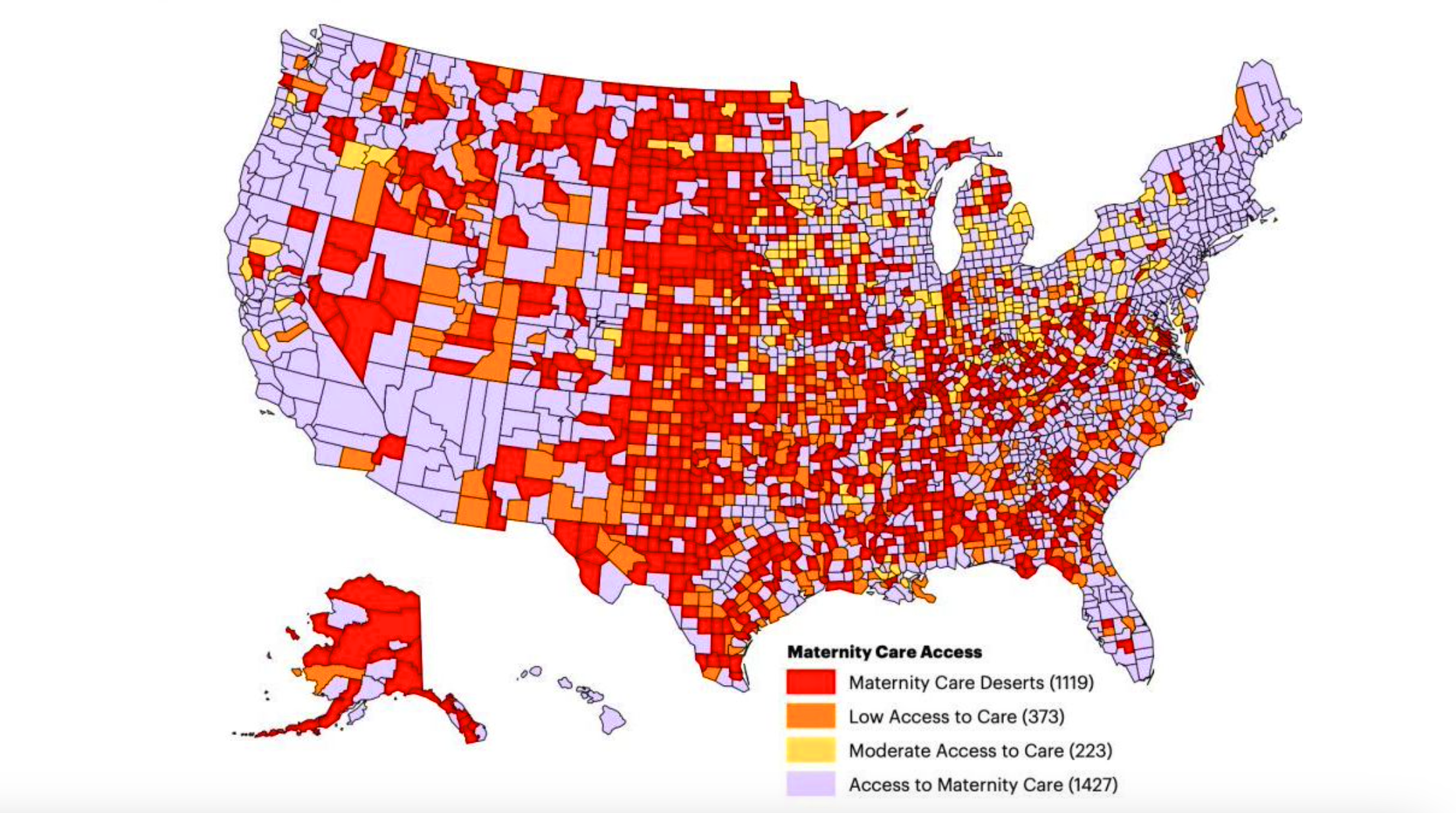Penna Dexter
The Wall Street Journal recently reported that: “More hospitals are getting out of the maternity business.” Maternity wards are closing across America, especially in sparsely-populated or aging communities.
Hospital executives report difficulties recruiting enough staff to safely operate. It’s hard to attract doctors and nurses to hospitals where births are declining.
Order of St. Francis Healthcare, which operates in Illinois, is finding it necessary to close certain maternity units. According to OSF’s chief operating officer, “There’s just not enough babies to be had.”
The March of Dimes defines maternity deserts as counties that have no hospital or birthing center, and that lack O.B.s and nurse midwives. As of 2020 there were 1052 counties on the March of Dimes’ list — 70 more than 4 years earlier. These counties were home to approximately 2.2 million women of childbearing age.
This is a dangerous situation. The Journal cites research showing that women who do give birth in remote, rural areas that have lost maternity wards are more likely to deliver too early or to encounter serious complications, such as acute kidney failure.
The growth of maternity deserts reflects our declining marriage rate, which translates to lower birth rates. A new study shows that 25 percent of Americans are turning 40 without ever having married. This is up from 20 percent in 2010 and 6 percent in 1980.
Married couples are having fewer children. Or no children. Some cite global problems like “climate change.” Others say they can’t afford kids.
Author Rod Dreher highlighted the Journal’s story in a recent blogpost, stating, “I have never understood how it is that every generation in the West had much more materially difficult lives than we do today, and yet they all chose to have families.”
Thomas à Kempis wrote of those “always searching for ease and not the things of Christ.” Let this generation not be, as Rod Dreher described them, “too rich and comfortable to want kids.”
 Listen Online
Listen Online Watch Online
Watch Online Find a Station in Your Area
Find a Station in Your Area










 Listen Now
Listen Now Watch Online
Watch Online
